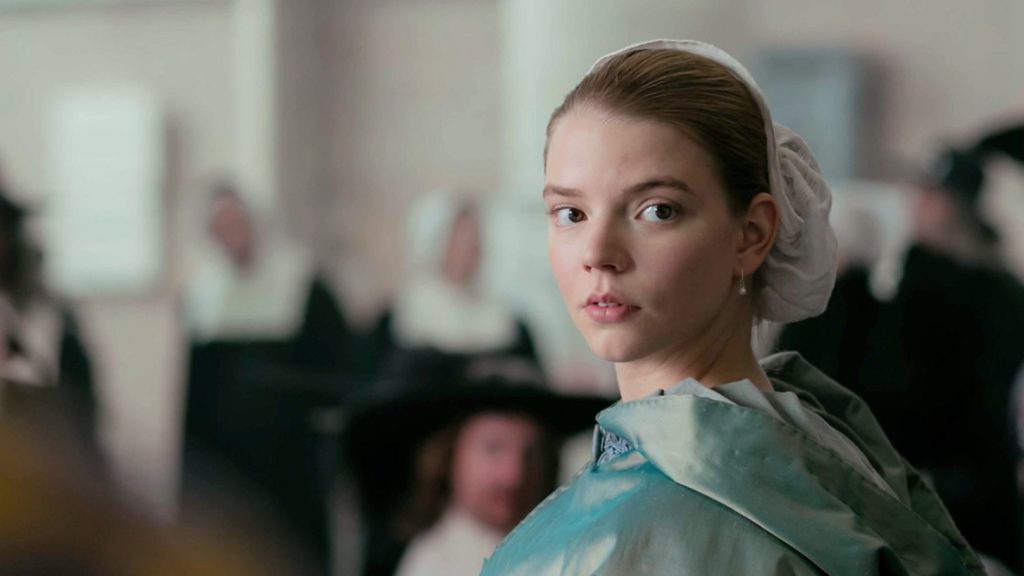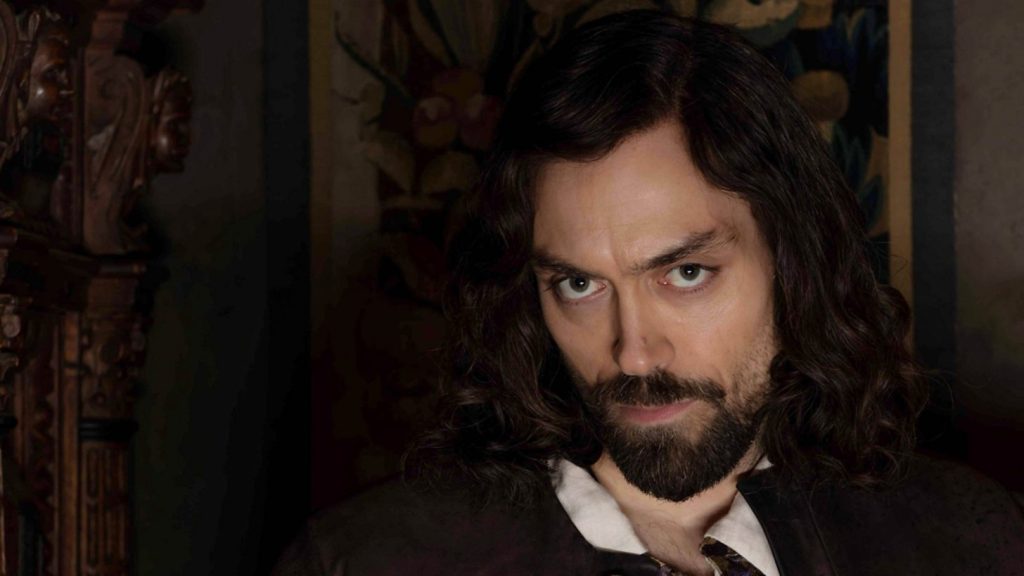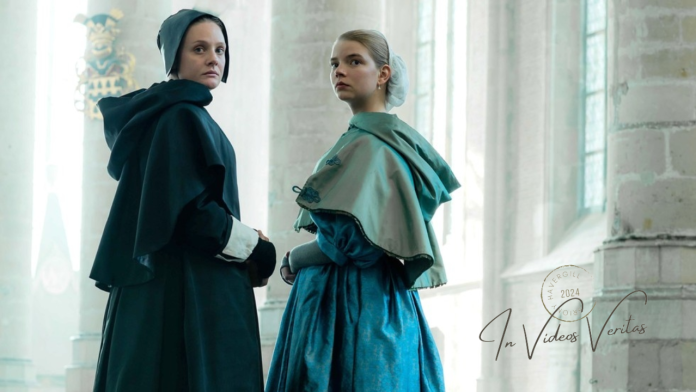Welcome to In Videos Veritas, where accuracy and artistic licence fight it out in the coliseum of audience experience.
The goal of this column is not to lambast a piece of media for failing to deliver perfect ‘historical accuracy’, something that is impossible to define, impossible to achieve, and rarely ever an acknowledged intention of the creators anyway. Nor is it my goal to overly praise works that feel authentic to their period but fall flat in other areas. So, ‘What am I doing?’, you may wonder. To put it simply: it’s interesting to explore how fact and fun interact, with an ultimate focus on what we are willing to include, embellish, or omit from the former in order to attain the latter.
This month, I’m taking a look at the BBC adaptation of The Miniaturist to celebrate the tenth anniversary of the book. The Miniaturist was Jessie Burton’s debut novel, which caused a bidding war between some of the biggest names in publishing in April, 2013. Picador’s six-figure winning sum and the subsequent success of the historical novel catapulted Jessie Burton into the kind of overnight stardom most debut authors dream of. The series is a testament to this staggering success, with lavish sets and costumes, and a roster of top talent, including Anya Taylor-Joy in the lead role.
Amsterdam, 1686
The Miniaturist is set in Amsterdam at the end of the Dutch ‘Golden Age’. Our protagonist is the naive Petronella ‘Nella’ Oortman (Taylor-Joy), who has just married the enigmatic Johannes Brandt (Alex Hassell), a wealthy sugar merchant. Turning up on the doorstep of her husband’s lavish house, Nella is surprised to be greeted by her unmarried sister-in-law, Marin (Romola Garai), who runs the household in her often-absent brother’s stead. Nella is further shocked by the presence of Otto (Paapa Essiedu), a black manservant whom Johannes freed from slavery abroad. The household is completed by Cornelia (Hayley Squires), a maidservant with a habit of listening at keyholes.
It’s a tense and unfulfilling start to Nella’s new life in Amsterdam, and Johannes seems little interested in her. To keep her occupied, and to alleviate suspicion, he buys Nella a ludicrously expensive doll’s house (based on the one owned by the real ‘Petronella Oortman’, whose life bears no other resemblance to this novel). It is when Nella seeks the services of a miniaturist to furnish her unusual present that things become strange, as uncanny and unasked-for replicas of people, pets, and objects in the Brandt household start arriving.
‘Every woman is the architect of her own fortune’
According to a popular contemporary manual for girls, the lives of (middle and upper class) women in 17th Century Netherlands had a single set path. Women were commonly viewed through the lens of their relationships with men; as someone’s daughter, as a prospective bride, as a wife, and as a mother. The author of this manual stresses that “the husband governs the household and provides for his family, while the wife adjusts her behaviour to his wishes in order to ensure harmony in the house.” He reminds the new bride that “her happiness depends on her ability to adjust to the new situation”, which is what we find Nella attempting to do at the start of The Miniaturist.
Nella makes a deliberate and continuous effort to fit herself neatly into her husband’s strange household. She placidly eats meals that aren’t to her taste, wears the ill-fitted clothes that have been bought for her, and agrees to keep her beloved pet parrot in the kitchens, though she hates to be separated from him. When her husband won’t spend the night with her, she tries to encourage him, and when he gifts her the doll’s house, she arranges to furnish it despite feeling patronised and confused. She is trying to make the best of her situation, comforted by the knowledge that this marriage is benefiting her impoverished family and fulfilling societal expectations.

Her sister-in-law, Marin, has managed to circumvent these expectations and remain unmarried. This is revealed to have been her choice, made in order to allow her the freedom to assist her brother with his business and live a life of greater agency. Nella does not understand Marin, though she, too, later takes up the mantle of Johannes’ business. The book and show frame this as an act of unique agency on Marin’s behalf, and an act of reluctant necessity on Nella’s part, though there is evidence that many women in the Netherlands acted as “agents” for their families’ businesses when needed.
The arguments around female agency throughout history are thorny. In fiction, this becomes particularly complex, as authors can pick and choose what limits are imposed upon their female characters, as well as to what extent their characters stick to these limits. Can we pass judgement on Nella for exhibiting little ‘agency’ until she is forced to? Should we praise Marin, in her rare position of privilege, for displaying more ‘agency’ than other women in The Miniaturist? Should we applaud female characters who display ‘agency’, even if they used it to uphold patriarchal ideals?
The Miniaturist shows us women accessing little pockets of power, experiencing moments where they are in control, where they can make choices for themselves. They are, as the mysterious miniaturist in the text claims, ‘architects of [their] own fortune[s]’, however miserably this turns out for them. How close this is to the reality of most women in 17th Century Amsterdam is difficult to tell, but The Miniaturist has faced criticism for how ‘modern’ its characters’ behaviours, assumptions, and perspectives seem.
‘Sugar makes people’s souls grow sick’
At the centre of The Miniaturist is the sugar trade. Nella is obsessed with marzipan; Marin secretly consumes sweets whilst preaching against indulgence; Cornelia’s closest friend runs a bakery looking to purchase sugar; and Otto’s native country was colonised and brutalised by Dutch plantation owners. The central conflict arises when Johannes fails to sell the sugar of Frans and Agnes Meermans, uneasy about the wealth it would bring the power-hungry couple. The sugar begins to rot in the perpetual damp of Amsterdam, and, with it, so do the relations between the Brandts and the Meermans, with tragic consequences.

Alex Hassell as as wealthy sugar merchant Johannes Brandt | © BBC
‘The extent to which people in the Dutch Republic were aware of the abuses overseas is something [that] needs to be studied more’. The Miniaturist, as a modern production, is distinctly aware of this abuse, yet spends very little time musing on it or engaging with it. Otto’s position in society, as a former slave bought abroad and “freed” to become a household servant, is not unusual for the period, so Nella’s abject surprise is a sticky point of inaccuracy. Both the book and the show seem more preoccupied with the religious demonisation of sugar than engaging with the horror of the trade itself, and yet even then, the depiction of Dutch Protestantism in The Miniaturist leaves much to be desired.
Similarly, the show dips its toe into the themes of sexuality and class but doesn’t have the run time needed to delve deeply into either. Whilst frustrating, it seems unfair to condemn the book and its adaptation for inadequately covering such extensive, complex, and sensitive topics as the slave trade, class inequality, gender and sexuality. The story was never meant to be ‘a didactic history lesson’, and yet its international success has resulted in an increase of scrutiny, some of which has chosen to treat it as such.
If you are going to watch The Miniaturist with the expectation that it will provide rounded, nuanced socio-political commentary on the period, then I suggest you look elsewhere. Alternately, you can watch it for the spectacle of it and appreciate the affecting performances, the evocative sets and authentic costumes, and the compelling mystery that drives it all.
In Videos Veritas rating:
Fact rating: 6/10
Fun rating: 7/10
Overall rating: 6.5/10
Words by Briony Havergill
Some selected sources and recommendations: Becoming a Woman in the Dutch Republic: Advice Literature for Young Adult Women of the Seventeenth and Eighteenth Centuries (Marja van Tilburg, 2018); Confronting the Netherlands’ Role in the Brutal History of Slavery (Nora McGreevy, 2021); How the Dutch are facing up to their colonial past (Cath Pound, 2021); Sodomy and Its Discontents: Discourse, Desire, and the Rise of a Same-Sex Proto-Something in the Early Modern Dutch Republic (Theo van der Meer, 2007); The Problem of Women’s Agency in Late Medieval and Early Modern Europe (Martha Howell, 2019); the Rijksmuseum.
Support The Indiependent
We’re trying to raise £200 a month to help cover our operational costs. This includes our ‘Writer of the Month’ awards, where we recognise the amazing work produced by our contributor team. If you’ve enjoyed reading our site, we’d really appreciate it if you could donate to The Indiependent. Whether you can give £1 or £10, you’d be making a huge difference to our small team.
